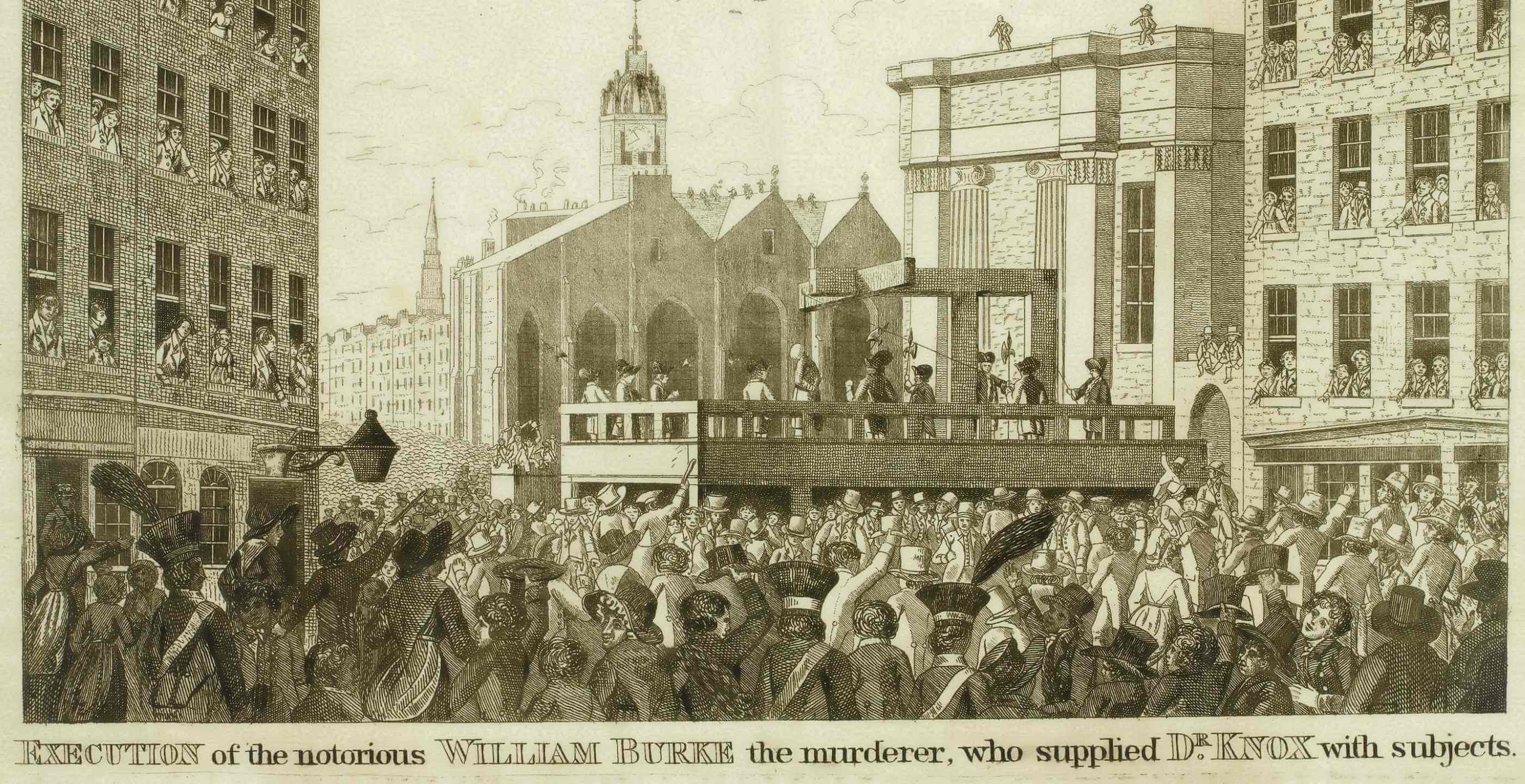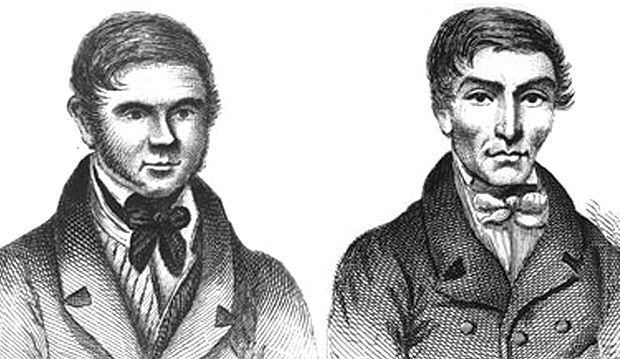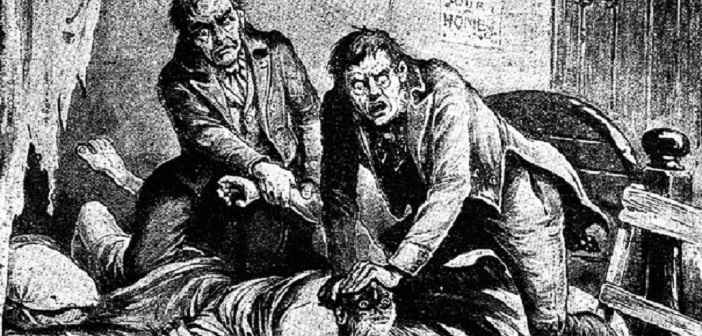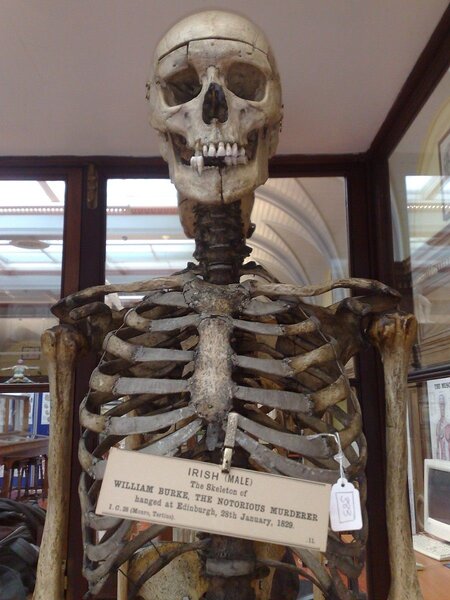Create a free profile to get unlimited access to exclusive videos, sweepstakes, and more!
A brief history of Burke and Hare, Scotland's most infamous murdering grave robbers

fIf you ever pay a visit to Edinburgh, Scotland’s capital city and one of the most gorgeous places on the planet, take a trip to the Greyfriars Kirkyard. The graveyard at the center of the old town is home to some of the most fascinating parts of the city's history, from its use as a prison for the Presbyterian movement known as the Covenanters to the legend of Greyfriars Bobby, the most loyal dog in Scotland. Harry Potter fans will take delight in finding all the tombstones with names that inspired J.K. Rowling (see if you can find the one that led to Tom Riddle). However, the most intriguing part of Greyfriars lies in the cages that seem randomly scattered across the ground. These iron gates to nowhere were a particular form of protection for the deceased of Edinburgh during the 1800s, a time when grave robbing was at its most popular. Of course, the most famous grave robbers in Scottish history found an easy way to cut out that particular middleman. They just killed people instead.
The ghosts of Burke and Hare can be found all across Edinburgh. Take any tour of the city and a guide will tell you their torrid tale; visit the Surgeon’s Hall Museum and you’ll see a book made from Burke’s skin; if you’re feeling frisky, you can even visit a strip club named after the pair, although I’m not sure anyone will explain the decision behind calling it that. Edinburgh is a city that loves its morbid past, and nowhere is that better represented than in its bleak celebrations of the lives, work, and deaths of Williams Burke and Hare.
In the early 1800s, Edinburgh became a leading hub in the study of surgery and anatomy. Many of the pioneering elements of modern medicine were created or discovered in the city's universities. Alexander Monro was the first figure of his era to provide detailed studies of the musculoskeletal system. John Bell is considered one of the founders of modern surgery of the vascular system, and he was one of the first figures of his era to speak out on the unnecessary pain and suffering caused by bad medicine. And then there was Robert Knox. At the time, Dr. Knox was something of a medical celebrity. He was a widely celebrated figure, both in Scotland and the rest of the UK, and access to his lectures became one of the era's hottest tickets. Knox was known to be a dramatic figure whose lectures were much more entertaining than those of his contemporaries. As with most of the profession and educational system at the time, there was high demand for Knox’s work. The only problem was that there weren’t enough bodies available to meet it.
The Scottish legal system decreed that the only bodies that could be used for anatomical study were those of prisoners, victims of suicide, and deceased orphans. This led to a chronic shortage of corpses for study, leaving many with the less than satisfactory option of reusing old bodies that had already begun to decompose. Of course, they do say that the market will always provide, and soon enough, Edinburgh had a major grave robbing problem on its hands.
Body-snatching became so big a problem that some families would spend night and day guarding the graves of their loved ones to stop them from being pilfered. The legal system made this all the more confusing: Robbing a grave was illegal, but taking the body was not because technically it didn’t belong to anyone. It was also an open secret that many family members would just take the bodies themselves to the university and pocket the sizable amount given for a fresh corpse. That's where William Hare enters the story.
Hare was an Irishman living in Edinburgh with few job prospects and dwindling savings. He had met William Burke while working on the harvest in Penicuik (pronounced Penny-cook). They lived together in a lodging house called Tanner's Close and had a reputation for heavy drinking and rambunctious behavior. On November 29, 1827, Donald, a lodger in Hare's house, died. He had done so before paying Hare his rent, which seemed to upset him more than the death itself. Hoping to make a profit on the situation, he and Burke sold Donald's body to a local anatomist, Dr. Knox. They received seven pounds and ten shillings for the body. According to Burke's confession, one of Knox's assistants told the pair that the university "would be glad to see them again when they had another to dispose of." So they got an idea.
Burke and Hare are typically characterized as grave robbers, but the reality is they probably didn’t do any actual grave robbing. That was way too much work. No, instead, they decided to move straight on to murder.
Historians disagree on when the first murder took place, a matter not helped by Burke's own confession giving differing sequences of events. It's widely agreed that the first murder took place in January or February of 1828, and was either a lodger named Joseph or a salt seller named Abigail Simpson. Other victims included two women named Mary Paterson and Janet Brown, who got very drunk with Burke before meeting their untimely end. Another lodger, named Mrs. Haldane, was smothered in her sleep, then her own daughter was later killed several months later. One of their victims was well known in Edinburgh as a local beggar nicknamed Daft Jamie. When he was killed and taken to Dr. Knox, some of his students recognized Jamie, but he dismissed their claims. However, that was the beginning of the end for Burke and Hare. Their final victim was a middle-aged Irish woman named Margaret Docherty. Like other victims, she had been lured to the lodging house with the promise of drink and was murdered, but unlike the others, her body was accidentally discovered by other lodgers before it could be sold to Dr. Knox. By the time Knox had collected his latest corpse, the police had already been notified and arrests were made. In total, 16 people were murdered by Burke and Hare.
Both men were arrested, along with their wives. Hare quickly cut a deal for immunity in exchange for providing evidence against his former cohort. The trial itself was almost as big an event as Dr. Knox's lectures. When Burke was sentenced to death by hanging, a crowd reportedly as large as 25,000 people came to watch the event. After death, the judge ordered that Burke's body "should be publicly dissected and anatomized. And I trust, that if it is ever customary to preserve skeletons, yours will be preserved, in order that posterity may keep in remembrance your atrocious crimes." And it was. Burke's skeleton is still in the Anatomical Museum of the Edinburgh Medical School, and the Surgeons' Hall Museum is home to Burke's death mask as well as a book made from his skin (although some claim it's just regular cow leather).
Hare's ultimate fate is unknown, although by that point he was one of Scotland's most hated men and crowds regularly taunted him in the streets for his crimes. Dr. Knox faced no charges for his hand in these crimes, but his reputation was left in tatters. He moved to London to try and start again but was barred from lecturing at the Royal College of Surgeons.
It wouldn’t entirely be accurate to say Edinburgh is proud of Burke and Hare, but their story has lived on for a reason. Edinburgh is a city steeped in fascinating contrasts. It’s a hive of cultural advancement but one whose history is built on decay, disease, and murder; it’s a city of stunning architectural beauty, yet those endless closes and cobblestone roads were home to sewage and crime and, yes, murderers looking for a quick buck. Nowadays, Edinburgh is cleaner, more tourist-friendly and way more expensive. All the dark elements have been neatly commodified for visitors looking for a change from all the castles. You can visit the Surgeons’ Hall, see Burke’s death mask, then buy cuddly toys. You can do the ghost tour through Greyfriars Kirk and then head to the pub next door. You can even watch the Burke and Hare movie, directed by John Landis, where the end credits and a shot of Burke’s skeleton feature the song 500 Miles by The Proclaimers (just in case you forget you’re in Scotland for a moment). Our history is the city’s own private joke now. Burke and Hare would have hated it. But hey, they weren’t Scottish anyway.

















